PICK OF THE MONTH
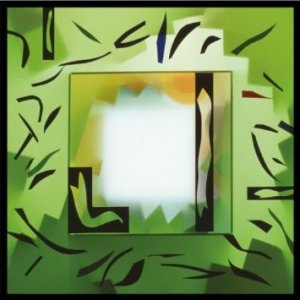 Brian Eno
Brian Eno
The Shutov Assembly (deluxe reissue; 2 discs)
All Saints (dist. Redeye)
WAST032CD
Over the past few years, there has been a slow but steady trickle of reissues of music made by Brian Eno in the 1970s, ’80s, and 90s. Quite a few of these have been excellent and most welcome, none of them more so than this deluxe two-disc reissue of The Shutov Assembly, a collection of ambient pieces dedicated to Russian artist Sergei Shutov. This music harks back quite explicitly to Eno’s ambient recordings of the 1970s (particularly the lovely Discreet Music), and demonstrates again why Eno is generally considered the grand master of this genre. It was released in conjunction with three other titles, all of them also deluxe two-disc sets featuring rare and unreleased bonus material: the equally ambient (but somewhat less interesting) Neroli, and the decidedly funkier and by-no-means-ambient The Drop and Nerve Net. Of his non-ambient albums from previous decades I find Nerve Net the most compelling, but any library collecting comprehensively in popular music should absolutely pick up all four of these reissues. Those collecting more selectively might find their needs met by only The Shutov Assembly and Nerve Net.
CLASSICAL
 Franz Joseph Haydn
Franz Joseph Haydn
Symphonies Nos. 57, 67, 68
Philharmonia Baroque Orchestra / Nicholas McGegan
Philharmonia Baroque Productions (dist. Harmonia Mundi)
PBP-08
Rick’s Pick
Listening to the rich, robust, yet silky tone of the Philharmonia Baroque Orchestra, it’s hard not to think back to the early days of the period-instrument movement in the 1970s — a time when traditionalists snickered at the thin and vinegary-sounding violins, the burbly natural horns, and the out-of-tune woodwinds that so often characterized early attempts at reconstructing the sounds of the 18th century. Period musicians have thoroughly vindicated themselves since, and no exponent of the movement has done so more convincingly than the Philharmonia Orchestra. These three symphonies show Haydn at his most creative and McGegan and crew at their most engagingly vibrant, and this disc should be considered an essential purchase for all classical collections.
 Wolfgang Amadeus Mozart
Wolfgang Amadeus Mozart
Horn Concertos; Horn Quintet
Pip Eastop; The Hanover Band; Eroica Quartet / Anthony Halstead
Hyperion (dist. Harmonia Mundi)
CDA68097
On the other hand, it does have to be acknowledged that 18th-century instruments had certain limitations. Most notoriously, the valveless (or “natural”) horn is an unbelievably difficult instrument to play in tune, let alone with an attractive tone, and even the most accomplished players are sometimes bested by its constraints. Pip Eastop is a brilliant natural horn player, and he acquits himself beautifully on this program of four concertos and one chamber work; despite his exceptional skill, however, there will still be some listeners who come away from this album preferring the richer and more burnished sound of the modern horn. There’s no need to choose between them, though — any classical collection would be well served by examples of both, and this is the finest period-instrument performance of these works I’ve heard yet.
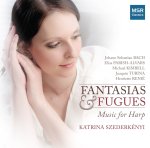 Various Composers
Various Composers
Fantasias & Fugues: Music for Harp
Katrina Szederkényi
MSR Classics (dist. Albany)
MS 1527
Harpist Katrina Szederkényi has set herself a prodigious task with this album: presenting fantasias and fugues from the 18th, 19th, 20th, and 21st centuries by a variety of composers, including J.S. Bach, Joaquín Turina, Elias Parish-Alvars, Michael Kimbell, and Henriette Renié. All consist of themes with fugal variations, and two of them (including Kimbell’s Ballade Arctique, written for Szederkényi and presented here in its world-premiere recording) are essentially tightly-structured tone poems. This album offers not only a portrait of an exceptionally talented young harpist, but also a handy catalogue of harp style and techniques from across four centuries.
 Various Composers
Various Composers
Sweete Musicke of Sundrie Kindes
The Royal Wind Music / Paul Leenhouts
Lindoro (dist. Allegro)
NL-3023
Rick’s Pick
The court of King Henry VIII was notable for its music; the king himself was an accomplished musician, and somewhere around the 1530s he hired a quintet of Italian brothers, the Bassanos, who were renowned as recorder builders and players. On this album the Royal Wind Music consort presents arrangements of music for recorder consort from that period written by such eminent English composers as Robert Parsons, Thomas Weelkes, Anthony Holborne, and (inevitably) John Dowland, suggesting what King Henry’s court might have sounded like at the time. Their playing is both surgically tight and sweetly expressive, whether jauntily bouncing through a galliard or conveying the moony melancholy of Dowland’s famous Semper Dowland, semper dolens. Gorgeous.
 Anton Diabelli; Konradin Kreutzer; Wenzeslaus Matiegka
Anton Diabelli; Konradin Kreutzer; Wenzeslaus Matiegka
Biedermeier Treasures for Csakan, Viola and Guitar
Trio Mirabell
Leonardo/Urania (dist. Albany)
LDV 14018
Speaking of recorders, here’s a fun curiosity: a collection of chamber works featuring the csakan, a walking-stick-sized recorder that enjoyed brief popularity during the Biedermeier Age in turn-of-the-(18th)-century Austria. This was a transitional period between the classical and Romantic styles, and the music of this time and place has often been somewhat condescended to as something less than really substantial. Be that as it may, these pieces are thoroughly charming and the performances by Trio Mirabell are excellent. The csakan itself is not the most gorgeous-sounding instrument in the world (at times it sounds distressingly like a dime-store flageolet), but the album is quite enjoyable overall and its uniqueness makes it a solid candidate for library collections.
 Marcin Mielczewski; Adam Jarzebski; Mikolaj Zielenski
Marcin Mielczewski; Adam Jarzebski; Mikolaj Zielenski
Virgo prudentissima: Adoration of the Virgin Mary at the Polish Court
Weser-Renaissance / Manfred Cordes
cpo (dist. Naxos)
777 772-2
Rick’s Pick
Catholicism has been dominant in Polish culture for centuries, so it’s no surprise that the worship of Mary was a prominent feature of Polish court life in the 17th century. This ravishing album brings together examples of Marian liturgical and festal music by three composers not very well known today. If your patrons have a taste for the music of Monteverdi or the Gabrieli family, do them a favor and give them a taste of something similar, but a little more Eastern European. As always, Weser-Renaissance performs brilliantly under the baton of Manfred Cordes.
 Ludwig van Beethoven; Alban Berg; Wolfgang Amadeus Mozart
Ludwig van Beethoven; Alban Berg; Wolfgang Amadeus Mozart
Sonatenabend
Mikhail Shilyaev
Stone (dist. Allegro)
5060192780482
The unifying element of this recording is Vienna — each of the composers featured had deep ties to the city. But perhaps more importantly, the pieces here also represent inflection points in the history of European art music. Beethoven’s C minor piano sonata marked the end of the classical era, while Berg’s sonata op. 1 signifies the end of the Romantic period and welcomes in the serialism that would be the hallmark of the Second Vienna School. Between them (stylistically speaking) is Mozart’s dramatic A minor sonata (K310), and the program ends with Beethoven’s eleven bagatelles, op. 119, which themselves construct a bridge between the baroque and the Romantic traditions. Mikhail Shilyaev plays these pieces with exceptional affection and clarity of line. Recommended to all classical collections.
 Johann Heinrich Rolle
Johann Heinrich Rolle
Jauchzet dem Herrn alle Welt: 31 Motets (2 discs)
Kammerchor Michaelstein / Sebastian Göring
CPO (dist. Naxos)
777 778-2
Rick’s Pick
Reviewers have to try to be objective, but there’s no way to avoid letting one’s judgment be affected by personal tastes and preferences. So when I say that this collection of motets by the obscure German composer Johann Heinrich Rolle is exquisitely pleasurable to listen to, please bear in mind that I have a particular affinity for this kind of solid, four-square 18th-century choral writing. Not that there’s anything stodgy or constrained about this music: it follows the rules and keeps its eyes on the devotional and harmonic prize, but Rolle’s sense of melodic invention is wonderful and he regularly delivers small but heart-tugging surprises. The Kammerchor Michaelstein sings beautifully and is recorded with the perfect balance of intimate presence and glowing resonance. An essential pick for all classical collections.
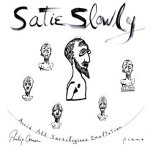 Erik Satie
Erik Satie
Satie Slowly (2 discs)
Philip Corner
Unseen Worlds
UW12
Says the press release: “American composer Philip Corner likes Satie too well not to object to how he is played.” Uh-oh; this isn’t just an album, it’s a crusade. But for library collections, that’s perfect — the 44-page booklet accompanying this album (which includes performances of the four Ogives, a Gnossiene, the three Gymnopédies, and several other pieces) puts forward Corner’s arguments as to the proper way to play Satie’s music, and the two discs illustrate his arguments compellingly, particularly on his very fine rendition of the Gymnopédies. This set will make a very fine pedagogical tool, regardless of whether one agrees with Corner’s musicological arguments.
JAZZ
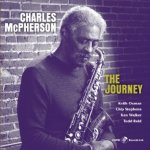 Charles McPherson
Charles McPherson
The Journey
Capri (dist. Town Hall)
74136-2
Alto saxophonist Charles McPherson has been on the scene since the early 1960s, and has played with such eminent artists as Charles Mingus, Barry Harris, and Art Farmer. He continues to play in the hard bop style that peaked in popularity in the late 1950s and early ’60s, and more power to him, I say. Playing in a quintet format that also features tenor player Keith Oxman, McPherson delivers an absolutely solid set of standards and originals including a wonderfully brisk and powerful rendition of the Charlie Parker tune “Au Privave.” His own “Bud Like,” which sounds like it’s probably a tribute to the great bebop pianist Bud Powell, is another highlight. Recommended to all jazz collections.
 Red Garland Trio
Red Garland Trio
Swingin’ on the Korner (2 discs)
Elemental
5990426
And speaking of legendary bebop pianists, here’s a treasure from the vaults: two and a half hours of previously-unreleased live recordings made by Red Garland in 1977 during a week-long stint at the Keystone Korner in San Francisco. Accompanied by bassis Leroy Vinnegar and drummer “Philly” Joe Jones (both of them legends themselves), Garland wows the crowd with his trademark joyful virtuosity, making familiar standards like “Billy Boy,” “On Green Dolphin Street” and “Autumn Leaves” sound fresh and new. The sound quality isn’t incredible, but it’s certainly good enough, and the performances are simply stunning.
 Nels Cline & Julian Lage
Nels Cline & Julian Lage
Room
Mack Avenue/Cryptogramophone
MAC1091
Nels Cline is one of the most consistently interesting guitarists on the modern jazz scene, in part because his interests and stylistic repertoire extend so far beyond that scene. Whether playing alt-country as a member of Wilco or shredding in a free jazz format with the Nels Cline Singers, he can always be counted on to deliver the unexpected. Julian Lage is a young virtuoso with similarly broad tastes, and on this duo album they engage in everything from simultaneous free improvisation to tightly-composed duets. Both of them favor a warm and clean jazz tone, but there are lots of jagged and surprising moments as well as plenty of passages of gentle beauty. Recommended.
 Basak Yavuz
Basak Yavuz
Things…
Z Müzik Yapim
27
Basak Yavuz is a Turkish singer and composer whose debut album represents a fairly seamless blending of genres; she sings alternately in Turkish and English, and accompaniment is provided by conventional jazz instruments as well as Indian flute, kalimba, and kora. But although the blend of genres within each song is quite smooth, the range she exhibits here is nevertheless startlingly broad — skip from her original composition “Bu Aralar” to her rendition of “How Deep Is the Ocean” and see what you think — pretty impressive, eh? Yavuz sings everything with a winning combination of warmth, wistfulness, and sharp humor. Very, very nice.
 Bogna Kicinska
Bogna Kicinska
The Maze
Surca Music
SMCD002
Another debut album from another promising European singer is this one by Polish vocalist and composer Bogna Kicinska. The Maze is a much more conventional jazz album than Yavuz’s, but it’s equally exciting. Kicinska distinguishes herself not so much by stylistic innovation as by jaw-dropping vocal facility and a thrilling approach to improvisation — she is one of the finest scat singers I’ve heard in years. Her accompanying combo includes a violin (a very nice touch), and on a couple of tracks she’s accompanied by a string quartet. This is straight-ahead but still adventurous jazz, and all of it is of a very high caliber.
 Plasmodium
Plasmodium
Clairaudience (reissue; download only)
Electric Cowbell
ECR715
So while we’re exploring the fringes of jazz, let’s make mention of this weird little gem of an album. The press materials characterize it as “a series of sound-surveillance portraits of sonic apparitions… set against a neo-crime jazz backdrop with a dizzying array of drum loops, keyboards, electronically manipulated trumpets, hard-boiled voiceover, robot voices, and found sound.” Here’s how I’d describe it: imagine African Head Charge collaborating with Jon Hassell on a 1970s spy movie soundtrack — and imagine that it’s produced by Bill Laswell. Intrigued? Yes, you are — check it out. (This is a remastered 10th-anniversary reissue, available only as a digital download. The original 2004 version can still be found on the used market in CD format, but prepare to pay through the nose.)
FOLK/COUNTRY
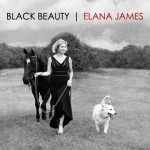 Elana James
Elana James
Black Beauty
Snarf
S333
Rick’s Pick
Oh, Elana James. As much as I love her work with the Hot Club of Cowtown (and I love it fiercely), there’s something uniquely special about her solo albums. This is where she cuts loose from the confines of Western swing and hot jazz, delving into torch songs, roots rock, reflective singer-songwriter fare, and occasionally ribald novelty tunes. Her second solo album finds her covering the Grateful Dead and Bob Dylan, as well as performing an Azerbaijani folk song and performing several originals. The most affecting track — heartbreaking, really — is her setting to music of the text of a letter written by a soldier shortly before he was killed in Iraq. This she delivers without any heavy-handedness; she lets the words speak for themselves, and they are quietly devastating. Strongly recommended to all libraries.
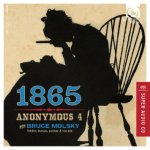 Anonymous 4
Anonymous 4
1865: Songs of Hope and Home from the American Civil War
Harmonia Mundi
HMU 807549
The all-woman vocal quartet Anonymous 4 achieved their first commercial success performing early music, but I strongly suspect that the real money-makers in their now-extensive catalog of releases have been the albums on which they’ve explored American folk music styles: the gospel collections American Angels and Gloryland. Make no mistake, those were exceptionally fine albums, and this collection of Civil War songs (including such familiar songs as “Listen to the Mockingbird” and “Shall We Gather at the River?”) fits nicely alongside them, even if it doesn’t feel quite as organically suited to their voices and performing style as the previous albums did. The presence of the brilliant singer, fiddler, and banjo player Bruce Molsky helps make up the difference, though, and the album is a genuine pleasure from beginning to end.
 Caitlin Canty
Caitlin Canty
Reckless Skyline
Self-released
No cat. no.
One of the great things about the current neo-folk-Americana-alt-country-roots-rock scene is the same thing that makes it hard to write about — you have to come up with these really long and awkwardly hyphenated catch-all terms in order to refer to it at all. And that’s because artists like Caitlin Canty trample all over the traditional borders that used to separate different varieties of folkie and country-ish music, rocking out one moment, torching it up the next, weeping honky-tonkily a few moments later. She gets away with it partly because musical boundaries are currently out fashion, but mainly because she has a world-class voice and an irresistible way with a melody. (Also, on this album, a deceptively ramshackle-sounding band. Don’t be fooled; they’re virtuosic.) Highly recommended.
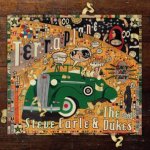 Steve Earle
Steve Earle
Terraplane
New West
NW6328
Lots of country music artists call themselves rebels and mavericks, but few can do so with as much justification as Steve Earle, who has been gleefully poking his thumb in the eye of the country establishment for decades now. His latest excursion in coloring outside the lines is this straight-up blues album, which explores haunting Delta sounds, blues-inflected Tin Pan Alley styles, and grinding electric blues-rock with equal enthusiasm and affection. Expect demand from this artist’s dedicated and sizable cult following.
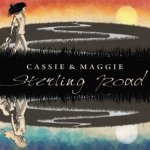 Cassie & Maggie MacDonald
Cassie & Maggie MacDonald
Sterling Road
Self-released
CMM 002
Eastern Canada has exceptionally rich folk music traditions, deeply informed by French, Irish, and Scottish influences. Sisters Cassie (fiddle, vocals) and Maggie (guitar, vocals) MacDonald grew up in the small seaside town of Antigonish, Nova Scotia, where they were steeped in the Celtic music traditions of maritime Canada, and on this album they both play and sing with a wonderful combination of verve and skill on a program of original and traditional songs and tunes. This is traditional music played with a modern edge, in arrangements that are sometimes more innovative than they might sound at first blush. Highly recommended.
ROCK/POP
 Enter Shikari
Enter Shikari
The Mindsweep
Hopeless
221082
Rick’s Pick
Enter Shikari came roaring out of the Hertfordshire postpunk scene about ten years ago, and since then the quartet has pretty much left nothing but scorched earth behind it. Alternately screaming and crooning in tight harmony, deploying bludgeoning hardcore beats and squidgy dubstep synths, and delivering furious social commentary, Enter Shikari offers both one of the most exciting live shows I’ve ever seen and one of the few truly original concepts in modern rock music. Their latest album is brilliant: lead singles “Anaesthetist” and “The Last Garrison” both combine sharp lyrical messages with music that is by turns overwhelming and funky, and if we’re starting to hear little hints of prog rock in their approach, well, maybe they’ll eventually revive and redeem that tired genre as well. Strongly recommended to all pop music collections.
 Robin McKelle & the Flytones
Robin McKelle & the Flytones
Heart of Memphis
VizzTone/Doxie (dist. Redeye)
VTDOX-20143
Though she made her mark initially as a big-band jazz singer, over the past five years or so Robin McKelle has been drifting in a decidedly soul/R&B direction, and the title of her latest album tells you exactly what to expect: Memphis-flavored soul music in a 1960s/70s style, with lots of horns. What sets McKelle apart from the soul-revival pack, though, is the quality of her songwriting; although she delivers what I think is perhaps the finest version of “Please Don’t Let Me Be Misunderstood” on record, the focus here is solidly on original compositions, and they are world-class. Her voice is a thing of throaty and whiskey-toned beauty. Highly recommended.
 Various Artists
Various Artists
Waypoint
Interchill
5002485
The Interchill label specializes, as one might expect, in electronic music that is funky and interesting but also relatively chilled out. No brostep rave-ups that sound like fight scenes from a Transformers movie, no skull-crushing drum’n’bass beat calisthenics. The music this label champions isn’t usually ambient, though–the beats are generally very definite and the grooves are often bone-deep. On their latest compilation you’ll hear everything from extra-dubwise dubstep (“Solaris Vision” by Gaudi) to gently lurching Euro-bass (“Fuerza Brutal” by Austero) — and once or twice (check the contributions from Fredrik Ohr and Liquid Stranger) things actually do get close to an ambient sound. All of it, as usual with this label, is well worth hearing.
 Bourbonese Qualk
Bourbonese Qualk
1983-1987
Mannequin (dist. Forced Exposure)
MNQ 061
Heaven help me, I’m a sucker for vintage industrial music. Especially when it comes packaged in a jacket that makes it look like a product of the Crass collective, circa 1982. To be clear, this retrospective collection from the British group Bourbonese Qualk isn’t Nitzer Ebb or Front 242-style industrial music, with guttural shouting and jackboot rhythms. It’s more experimental, almost avant-garde, with lots of twisted samples, weird found-sound vocals, and ramshackle production. At its best, it actually kind of sounds like a collaboration between Throbbing Gristle and Muslimgauze. I realize that might sound horrifying to you; if it does, then keep your distance. But for those with ears to hear, this is tons of grim, aggro-retro fun.
WORLD/ETHNIC
 Alex Conde
Alex Conde
Descarga for Monk
Zoho (dist. Allegro)
ZM 201501
Thelonious Monk was a unique figure in jazz, a composer who wrote such strange and compelling tunes that he has remained a source of fascination for jazz musicians for over 60 years. For pianist and composer Alex Conde, that fascination led him to arrange a program of Monk pieces in a flamenco style. The result makes a couple of things clear: first, part of the charm of Monk’s music is in its often jagged rhythms, and those don’t lend themselves particularly well to a flamenco setting; on the other hand, putting Monk’s odd melodies into a different rhythmic context does shed an interesting new light on them and allows them to be heard in a different way. Library collections supporting jazz programs would definitely benefit from including this loving and unusual tribute.
 Various Artists
Various Artists
Rough Guide to African Rare Groove, Vol. 1
Rough Guide
RGNET1323CD
Rick’s Pick
Back in the heyday of vinyl-based club music, DJs would compete with each other to dig up the most obscure old soul and funk records. The concept of “rare groove” has obviously changed drastically in the internet era, when so many obscurities are freely available and relatively easy to find. But this collection of South African township jive, Mozambican marrabenta, Nigerian highlife, and Congolese rumba from the 1960s and 1970s will probably not duplicate anything in your collection, and for newcomers to the world(s) of African pop music it will be a revelation. Highly recommended to all libraries.
 Sylford Walker
Sylford Walker
Time Has Come
Walkyahwalk
No cat. no.
One thing to acknowledge right up front: you don’t go to Sylford Walker for sweet, melodic singing. His voice is reedy and rough, and his style is more declamatory than tuneful; imagine Joseph Hill doing a Prince Far I impression, and you’ll get the general idea. But if you want bottomless grooves, strictly conscious lyrical messages, and a general air of dread seriousness, then Sylford Walker is your man, and has been for several decades now. Apart from the curiously non-dubsteppy “Just Can’t Understand (Dubstep),” this album is a solid winner in the roots reggae category.
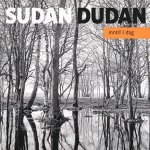 Sudan Dudan
Sudan Dudan
Inntil i Dag
Ta:lik (dist. Albany)
TA100CD
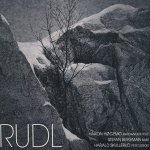 Hakon Høgemo; Stefan Bergman; Harald Skullerud
Hakon Høgemo; Stefan Bergman; Harald Skullerud
Rudl
Ta:lik (dist. Albany)
TA116CD
Rick’s Pick
Two very different takes on Norwegian folk traditions here. Sudan Dudan is the duo of Anders Røine (vocal, guitar) and Marit Karlberg (vocals, zither), and they specialize in delicately beautiful (and sometimes deceptive complex) traditional and original songs that, although sung in Norwegian, will resonate instantly with anyone who loves English or Celtic folk music. Hakon Høgemo, on the other hand, is a hardanger fiddle player who takes ancient fiddle tunes and performs them accompanied by electric bass and percussion, creating a wonderful tension between funky modernism and keening traditionalism. The hardanger fiddle has a unique and instantly-recognizable sound thanks to its drone strings, but you’ve never heard it sound quite like this. Both of these albums would make fine additions to any international music collection.
 New Kingston
New Kingston
Kingston City
Easy Star
ES 1045
Rick’s Pick
Rumor has it that ragga dancehall is losing its chokehold on the reggae scene in Jamaica, being replaced by rootsier, more old-fashioned sounds. That may be the case, but in the US roots reggae never really went out of style, and the third album from the family band New Kingston (out of Brooklyn) shows how strong that scene has become. The Panton family’s Jamaican roots are fully in evidence, and their sound is both clean and rich, modern but based in tradition, and the hooks are plentiful and solid. Note the caliber of the guest musicians: Pam Hall, Santa Davis, Squiddly Cole — that tells you something. A brilliant album all around.
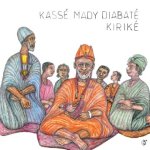 Kassé Mady Diabaté
Kassé Mady Diabaté
Kiriké
Six Degrees
361214
A griot of distinguished family line, Kassé Mady Diabaté has been a prominent exponent of that ancient singing tradition for nearly 50 years. On this album he is accompanied by ngoni, balafon, kora (played by the great Ballaké Sissoko), and cello; the accompaniment is minimal, the better to showcase his strong, reedy tenor voice. Malian music is increasingly popular in the US, so libraries with strong world music collections should seriously consider picking this one up.